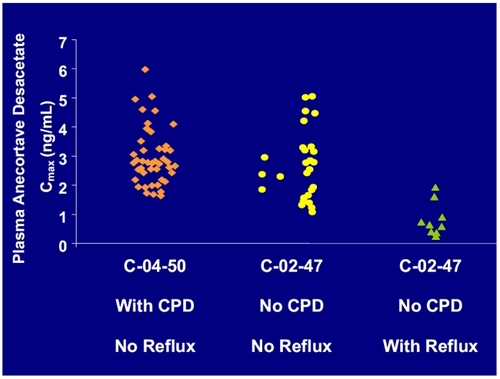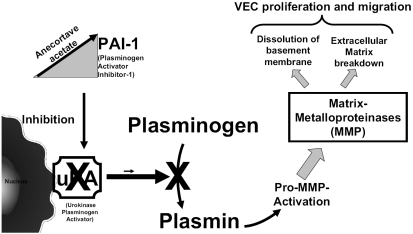Figures & data
Table 1 CNV therapies currently approved or under clinical development
Table 2 Summary of significant risk factors for age-related macular degeneration
Figure 1 Schematic diagram of the anecortave acetate, a unique synthetic cortisene. Modifications made to the cortisol parent molecule are shown.
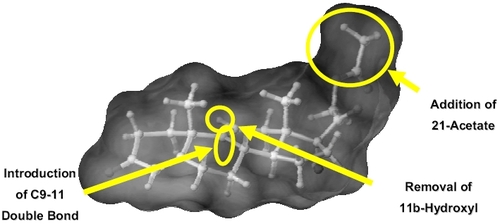
Table 3 Summary of the in vitro and in vivo models of neovascularization used to evaluate the antiangiogenic properties of anecortave acetate
Figure 2 The unique design of the blunt tinted posterior juxtascleral depot cannula ensures that anecortave acetate is delivered directly behind the macula while leaving the globe intact.
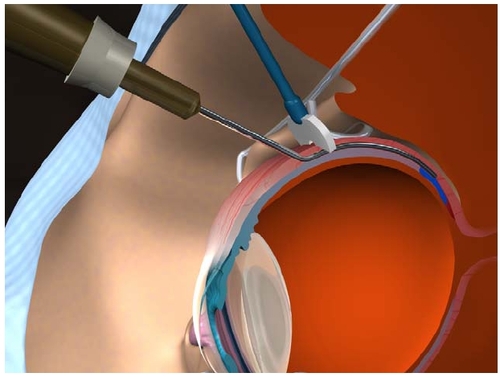
Figure 3 The counter pressure device prevents reflux of anecortave acetate when placed as posterior as possible in position with the posterior juxtascleral depot cannula.
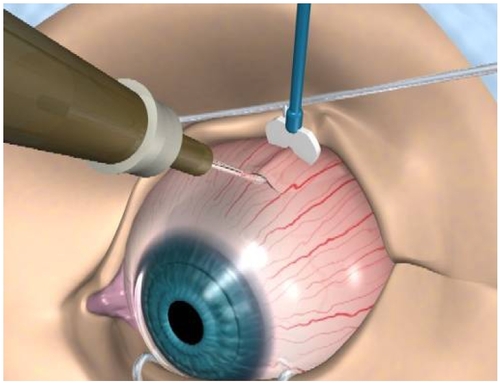
Table 4 Percentages of adverse events attributed to the posterior juxtascleral administration or sham procedure
Figure 4 Evidence supports use of counter pressure device (CPD) for managing reflux. Plasma concentrations of anecortave desacetate in patients with the CPD (C-04-50) were the same as the plasma concentrations in patients without the CPD and had no reflux (C-02-47). Patients (C-02-47) with reflux had 4 fold lower levels of anecortave desacetate than patients without reflux. In the C-04-50 study, the CPD prevented reflux in 100% of the patients.
